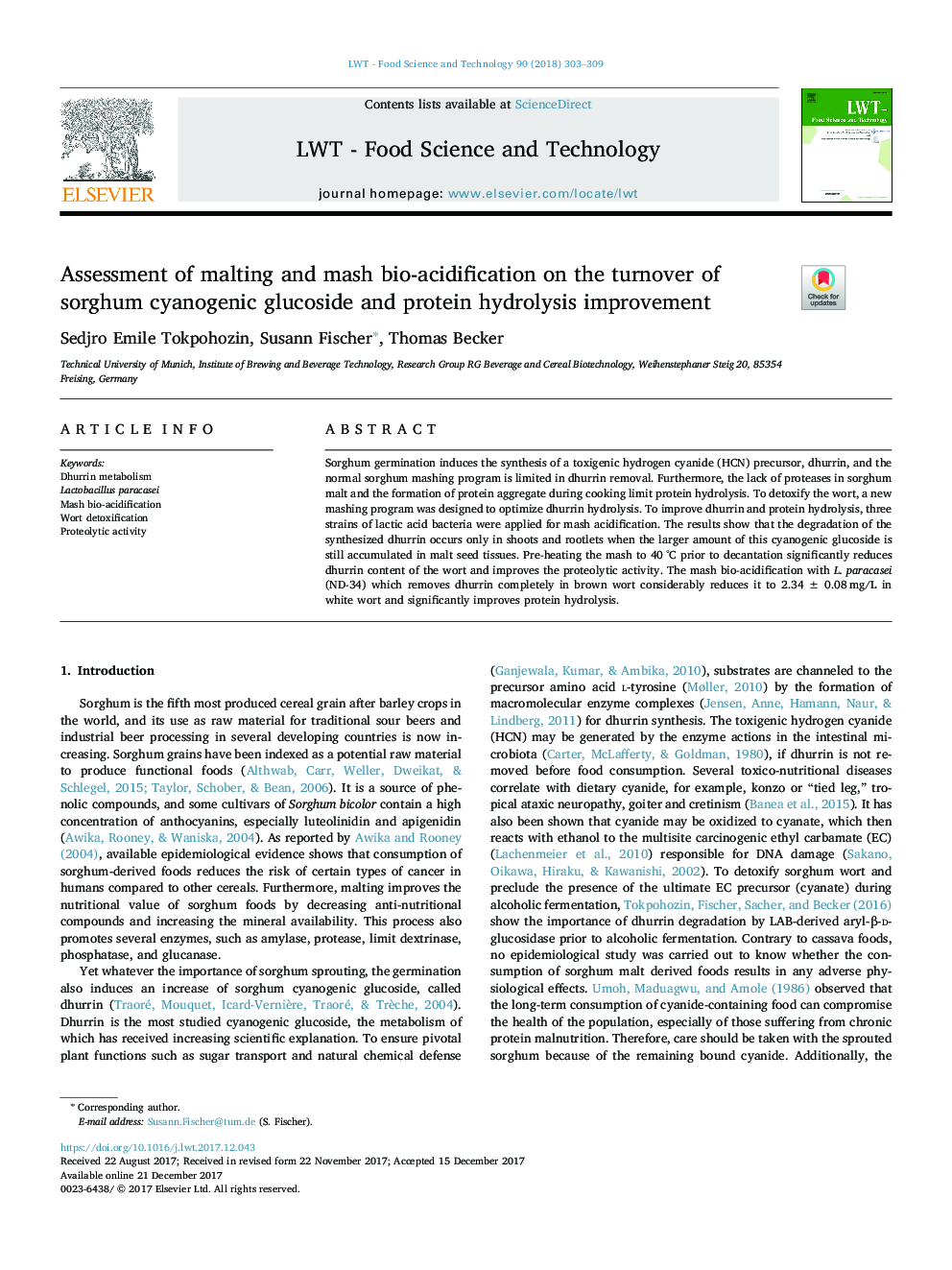| Article ID | Journal | Published Year | Pages | File Type |
|---|---|---|---|---|
| 8891607 | LWT - Food Science and Technology | 2018 | 7 Pages |
Abstract
Sorghum germination induces the synthesis of a toxigenic hydrogen cyanide (HCN) precursor, dhurrin, and the normal sorghum mashing program is limited in dhurrin removal. Furthermore, the lack of proteases in sorghum malt and the formation of protein aggregate during cooking limit protein hydrolysis. To detoxify the wort, a new mashing program was designed to optimize dhurrin hydrolysis. To improve dhurrin and protein hydrolysis, three strains of lactic acid bacteria were applied for mash acidification. The results show that the degradation of the synthesized dhurrin occurs only in shoots and rootlets when the larger amount of this cyanogenic glucoside is still accumulated in malt seed tissues. Pre-heating the mash to 40â¯Â°C prior to decantation significantly reduces dhurrin content of the wort and improves the proteolytic activity. The mash bio-acidification with L. paracasei (ND-34) which removes dhurrin completely in brown wort considerably reduces it to 2.34â¯Â±â¯0.08â¯mg/L in white wort and significantly improves protein hydrolysis.
Related Topics
Life Sciences
Agricultural and Biological Sciences
Food Science
Authors
Sedjro Emile Tokpohozin, Susann Fischer, Thomas Becker,
